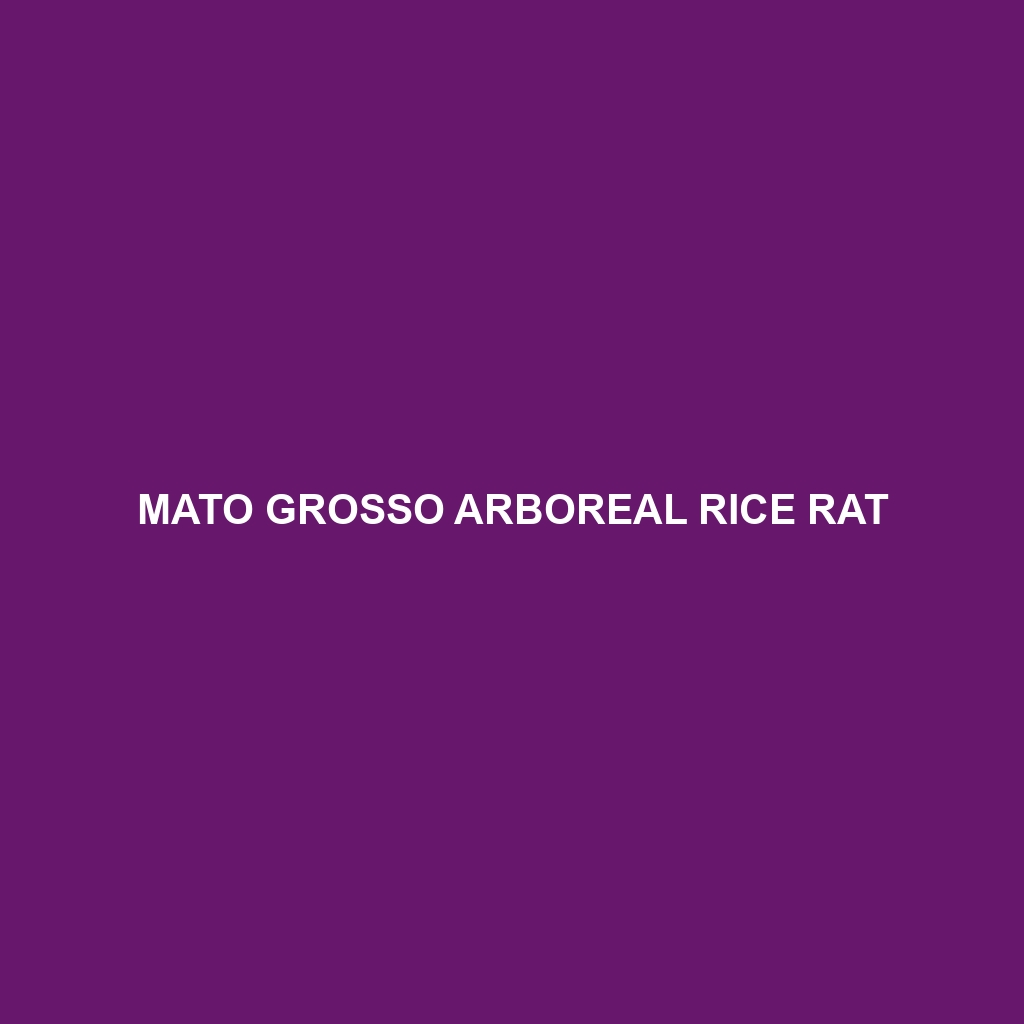Mato Grosso Arboreal Rice Rat
Common Name: Mato Grosso Arboreal Rice Rat
Scientific Name: Oligoryzomys mattogrossae
Habitat
The Mato Grosso Arboreal Rice Rat is primarily found in the dense tropical forests of the **Mato Grosso region** in Brazil. This species thrives in **humid, high-canopy environments** and is often spotted in primary and secondary forests, particularly near water sources such as rivers and streams. Their habitat preferences include both **lowland rainforests** and **montane forests** where they can find ample cover and nesting opportunities.
Physical Characteristics
The Mato Grosso Arboreal Rice Rat typically measures around **20 to 25 centimeters** in body length, with an additional tail length of approximately **25 centimeters**. Its fur is predominantly **brown** or **grey** with lighter underbellies, which provides excellent camouflage among the forest foliage. Notable features include a long, slender tail and large ears that enhance its hearing capabilities. The species also exhibits strong, agile limbs, which allow it to navigate effortlessly through trees.
Behavior
This species is primarily **nocturnal**, exhibiting heightened activity during the night when it forages for food. The Mato Grosso Arboreal Rice Rat is known for its arboreal lifestyle, spending most of its time climbing and nesting in trees. Its behavior includes **social interactions** and the establishment of **territories**, which are marked through vocalizations and scent marking. This adaptability to an arboreal habitat makes it a significant subject of study for **biodiversity research**.
Diet
Mato Grosso Arboreal Rice Rats are **omnivorous** creatures that consume a varied diet consisting of seeds, fruits, and small invertebrates. They have been observed foraging on the forest floor as well as among tree branches, using their sharp incisors to access tough plant materials. This diversity in feeding habits supports their role in seed dispersal within their habitat, highlighting their ecological importance.
Reproduction
The Mato Grosso Arboreal Rice Rat typically breeds during the rainy season, with a gestation period lasting about **30 days**. Females can give birth to **two to six offspring** per litter, which are born blind and helpless. After about **two weeks**, the young begin to develop fur and open their eyes. Parental care is critical during the early stages of life, with the mother often creating **nests** in the dense foliage to protect her young from predators.
Conservation Status
The current conservation status of the Mato Grosso Arboreal Rice Rat is classified as **vulnerable** due to habitat degradation and deforestation in its native range. Ongoing habitat loss poses significant threats to this species, alongside climate change impacts that affect their arboreal habitat. Conservation efforts are essential to protect this unique rodent and its ecosystem.
Interesting Facts
One fascinating aspect of the Mato Grosso Arboreal Rice Rat is its remarkable **climbing ability**, which is not only due to its physical characteristics but also its behavioral adaptations. Additionally, researchers have noted that these rats can leap distances up to **two meters**, showcasing their agility and survival skills in their natural habitat.
Role in Ecosystem
The Mato Grosso Arboreal Rice Rat plays a crucial role in its ecosystem as both a **seed disperser** and **prey species** for various predators. By consuming fruits and seeds, it helps in the growth of new plants and maintains forest biodiversity. Its presence in the ecosystem indicates a healthy forest environment, making it an essential species for maintaining ecological balance in the tropical forests of Brazil.
